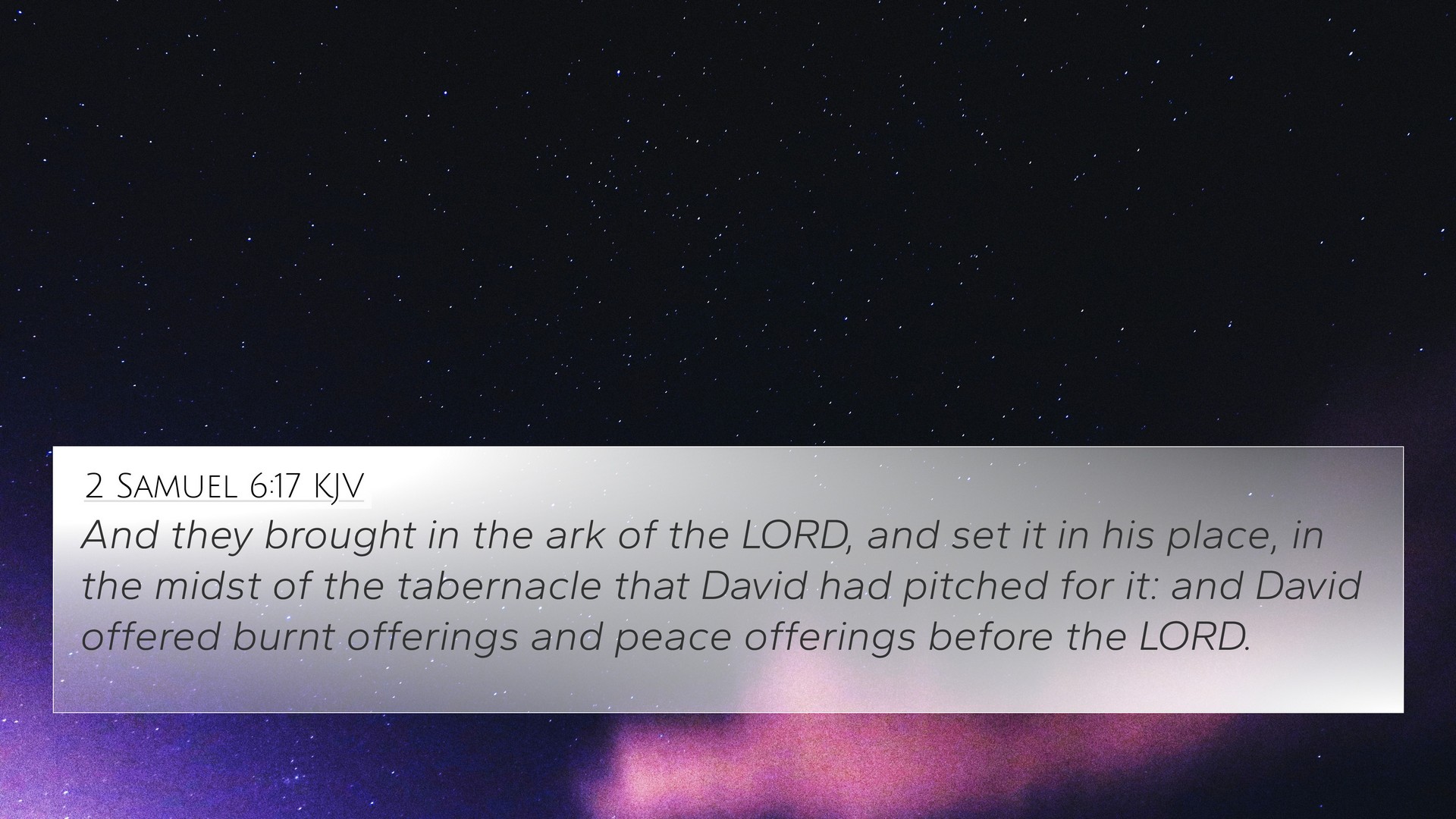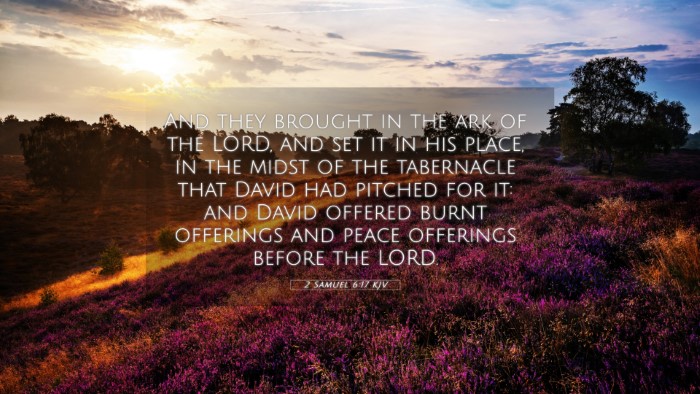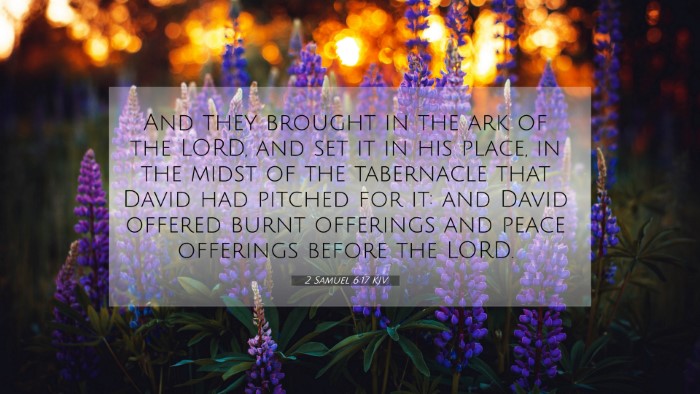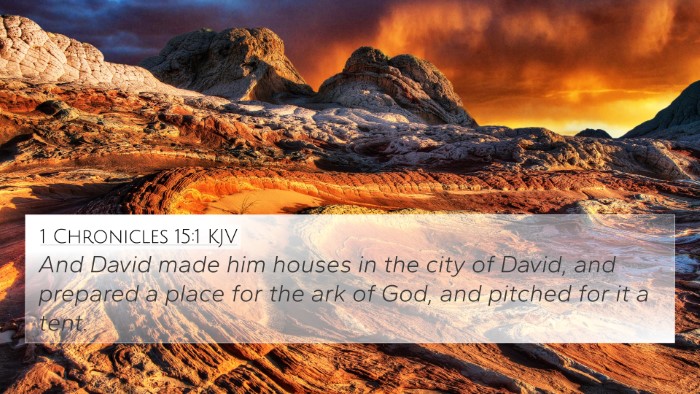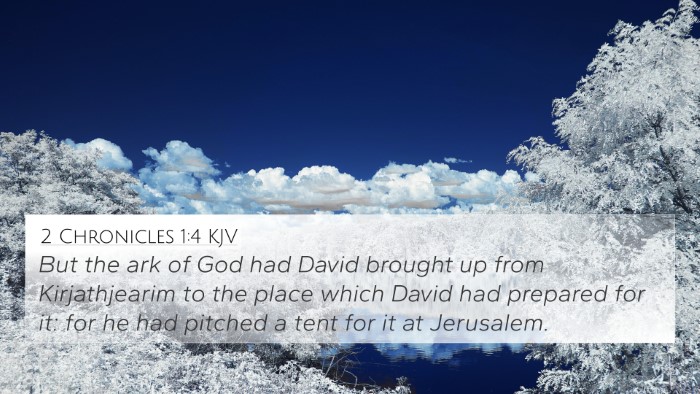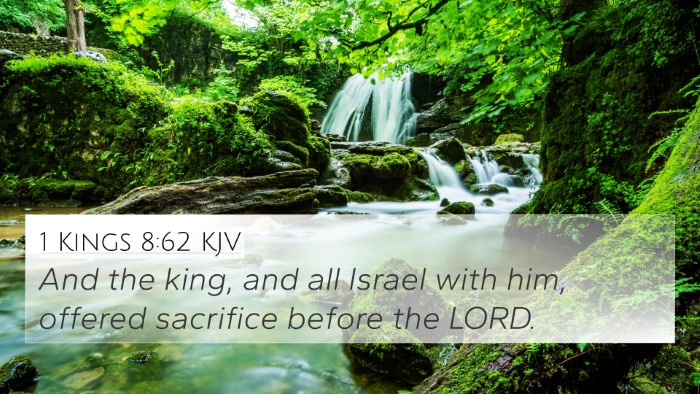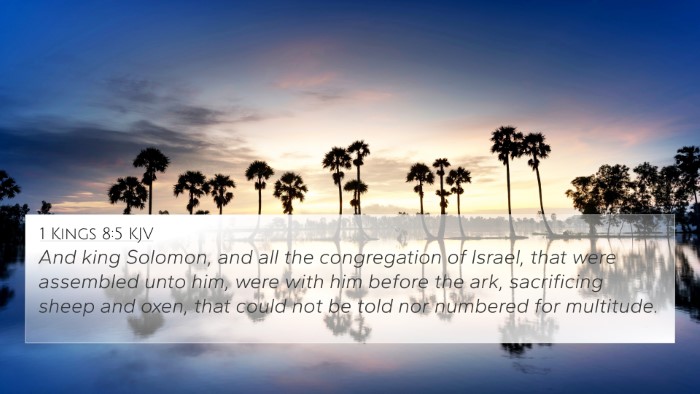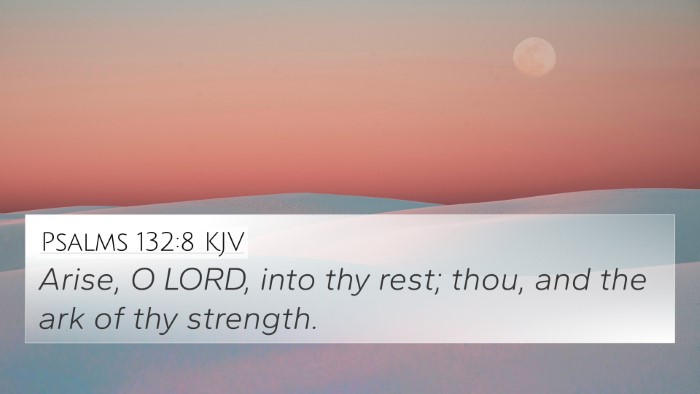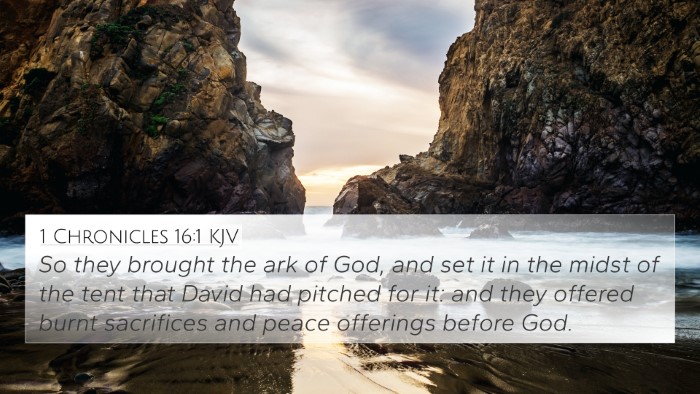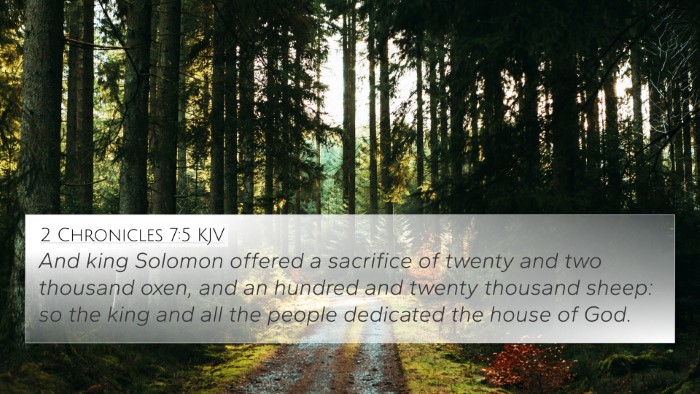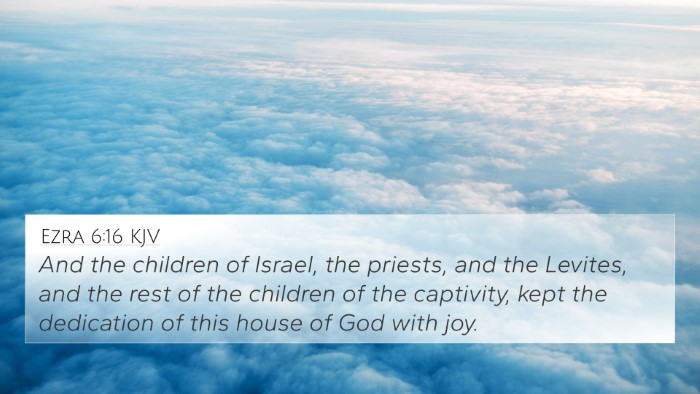Understanding 2 Samuel 6:17
2 Samuel 6:17 states: "And they brought in the ark of the Lord, and set it in his place, in the midst of the tabernacle that David had pitched for it: and David offered burnt offerings and peace offerings before the Lord." This significant verse marks a pivotal moment in the establishment of Israel's worship practices under King David.
Contextual Background
This event occurs after David triumphantly brings the Ark of the Covenant to Jerusalem, a central symbol of God's presence among His people. The bringing of the Ark signifies not only a spiritual but also a political consolidation of David's kingship.
Commentary Insights
- Matthew Henry: Henry emphasizes the joy and reverence in the act of bringing the Ark into the Tabernacle, showcasing the importance of a proper location for worship. He notes that David’s actions reflect a heart devoted to God and the proper conduct of worship.
- Albert Barnes: Barnes points out the significance of the Ark being placed centrally within the Tabernacle, symbolizing God's dwelling among His people. He reflects on the offerings made by David as expressions of gratitude and acknowledgment of God’s sovereignty.
- Adam Clarke: Clarke elaborates on David's offerings, explaining that burnt offerings symbolize total dedication to God while peace offerings represent the fellowship between God and His people. He highlights the communal aspect of worship in Israelite culture.
Theological Significance
The return of the Ark and the establishment of the Tabernacle under David’s leadership illustrate key theological themes: God's desire to dwell among His people, the significance of worship, and the necessity of proper sacrifices.
Cross-References
- 1 Chronicles 15:1-3: This passage recounts the preparation made by David to bring the Ark to Jerusalem, emphasizing the importance of reverence in transporting the sacred object.
- Exodus 25:22: God promises to meet with His people above the mercy seat of the Ark, underscoring the Ark's role as a conduit of divine presence.
- Psalms 132:8: This psalm recalls David's desire to bring the Ark to rest in a designated place, reflecting the deep connection between David and the Ark.
- Hebrews 9:4: The New Testament reference to the contents of the Ark connects the Old Testament worship with the New Covenant in Christ.
- 1 Samuel 15:22: Here, the Lord expresses that obedience is greater than sacrifice, highlighting the need for sincerity in offerings.
- 2 Samuel 6:14: This verse precedes 6:17 and illustrates David's exuberant worship as he dances before the Lord, showcasing the joy of the occasion.
- Exodus 29:43-46: These verses discuss the purpose of the Tabernacle as a place for God to dwell among His people, echoing the themes present in 2 Samuel 6:17.
Practical Applications
Understanding this verse encourages believers to recognize the significance of worship in their own lives. The act of offering, whether through prayer, service, or communal gatherings, remains an essential aspect of a vibrant faith.
Thematic Connections
- The Presence of God: The overarching theme of God's desire to dwell among His people is mirrored across the scriptures, notably in John 1:14, where it states, "The Word became flesh and dwelt among us."
- Worship Practices: The forms of worship evolved from the Old Testament practices established by David to the New Testament instructions on worship in spirit and truth (John 4:24).
- Offerings and Sacrifice: David's sacrifices reflect a continuity of the sacrificial system leading to understanding of Christ's ultimate sacrifice, as explored in Hebrews 10:10.
Conclusion
2 Samuel 6:17 encapsulates a moment where divine presence, proper worship, and community converge. Believers are encouraged to reflect on their approach to worship and the significance of God's enduring presence in their lives, urging a deeper understanding through tools for Bible cross-referencing, such as a Bible concordance or a Bible cross-reference guide, to discover interconnections within Scripture.
